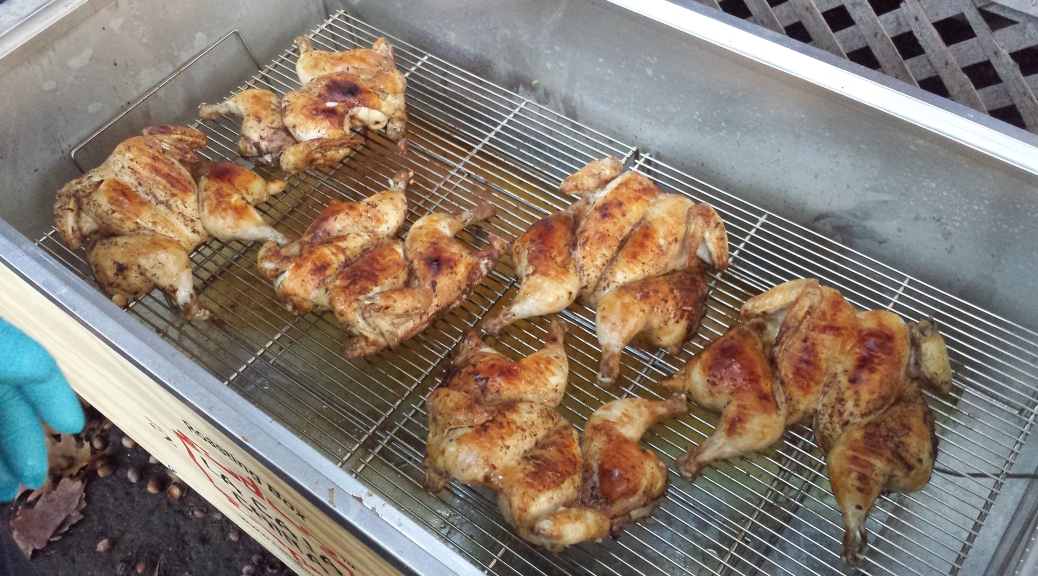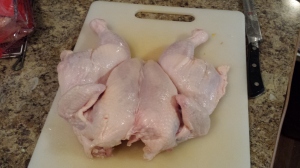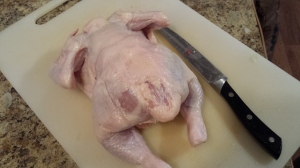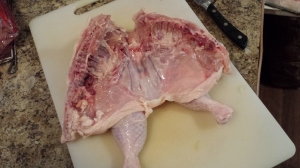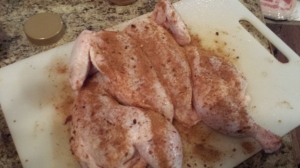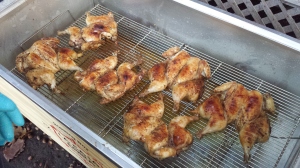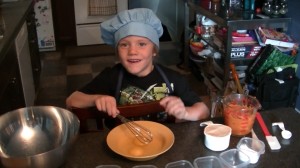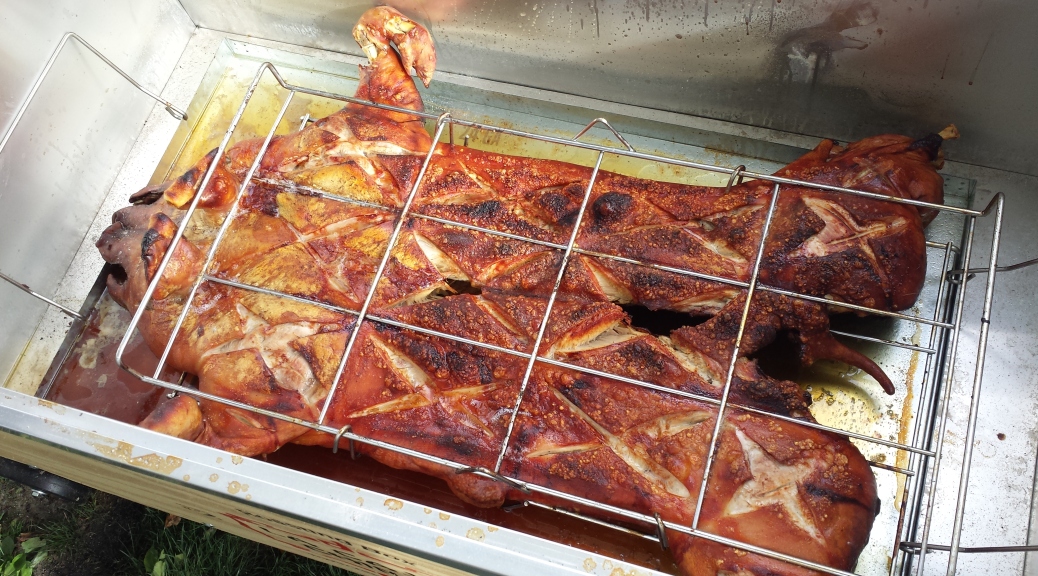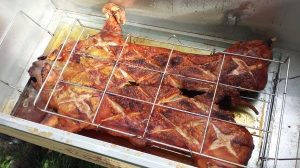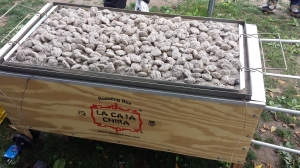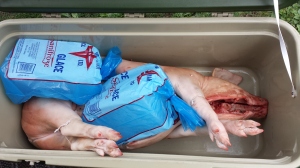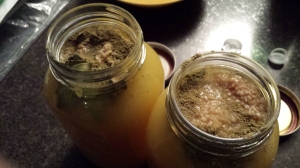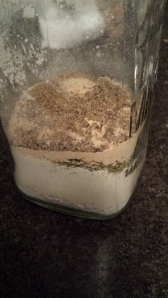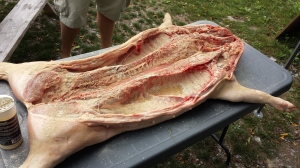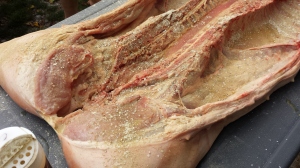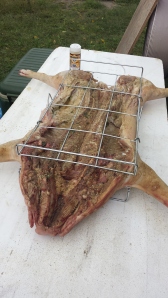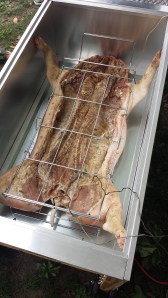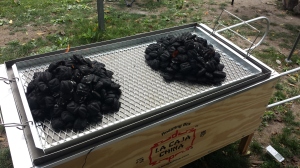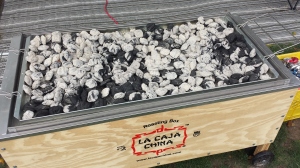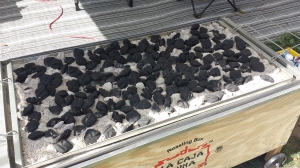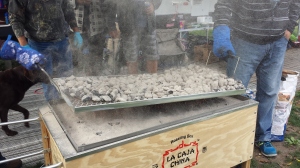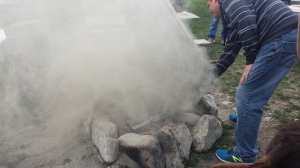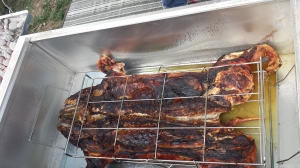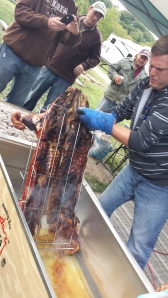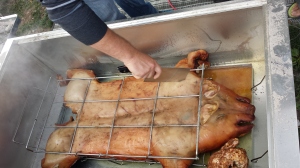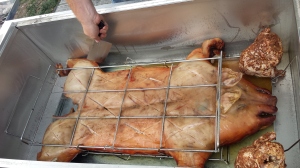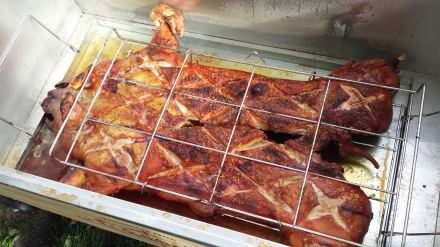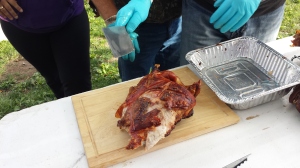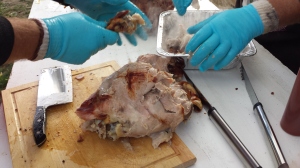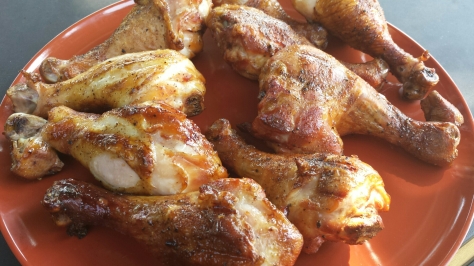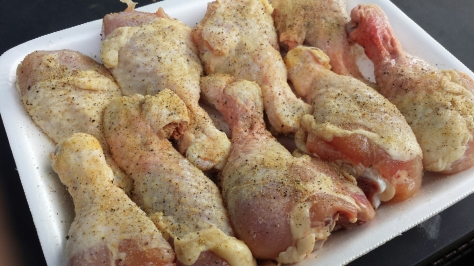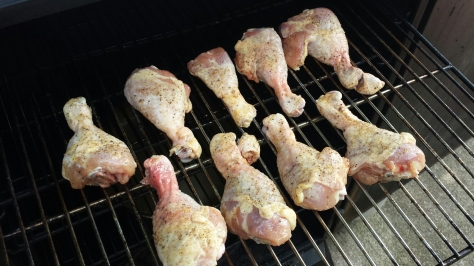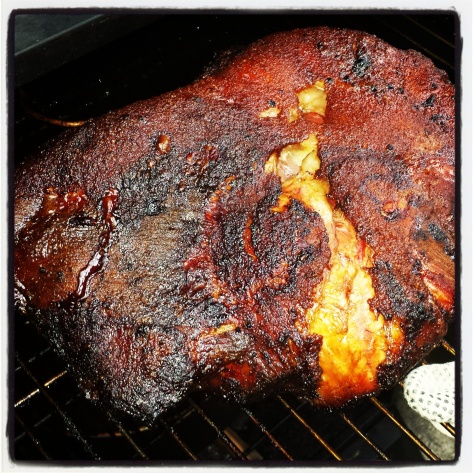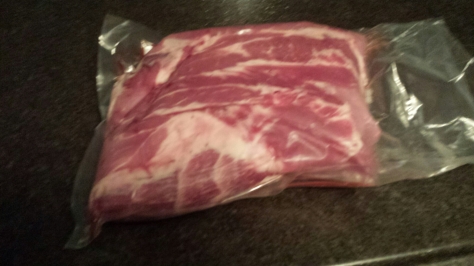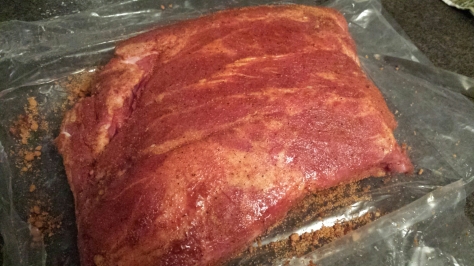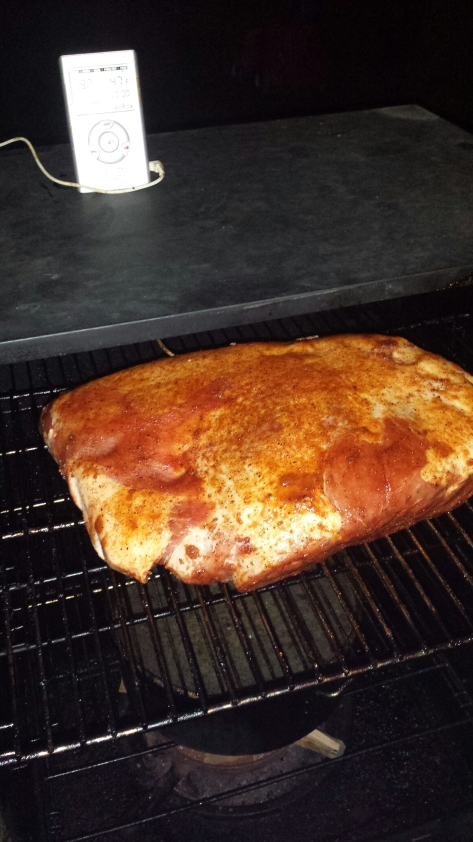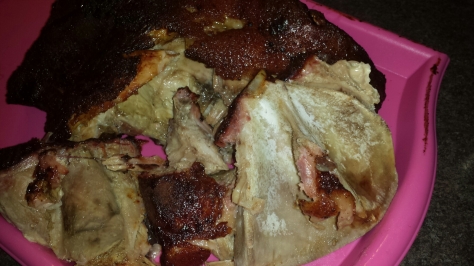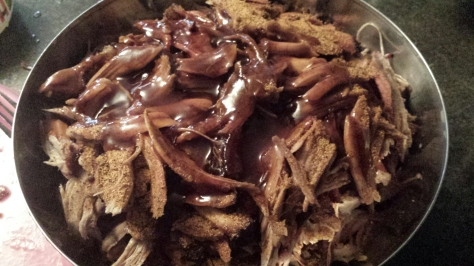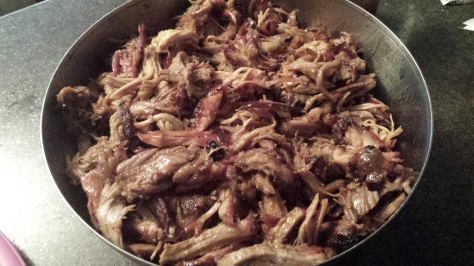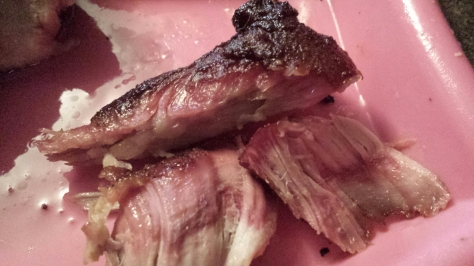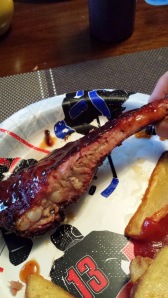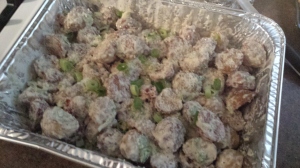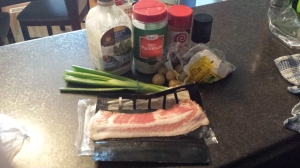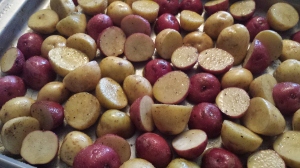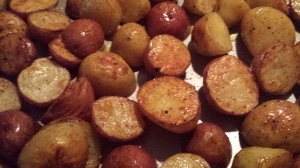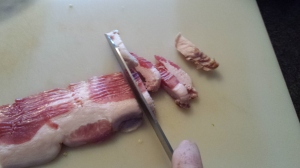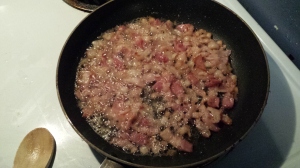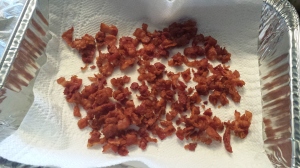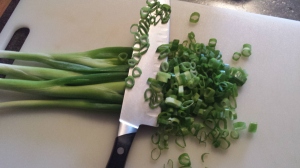SPATCHCOCK! No, that’s not a dirty word or an insult or anything along those lines, this isn’t that type of blog. Spatchcock is simply the term used to describe a chicken, turkey, or any other type of whole bird that has been split along the spine (removing the spine) to allow it to open up and lie flat.
I love whole chickens. Whole chickens give you the ability to prepare both white and dark meat at the same time while the bone and skin give the meat a huge boost in flavour.
The idea behind spatchcocking a chicken is it allows you to cook the chicken fully on the bone as you would with a whole chicken but much faster. The body cavity (where we usually jam stuffing) insulates the bird during cooking. This insulation slows down the cooking process and also makes the bird cook unevenly. Spatchcocking removes this cavity. Birds are weirdly shaped with big pieces of meat intertwined with much smaller pieces. This process helps the breast and dark meat sections to cook at relatively the same pace.
To start, you are going to need a whole chicken, a very sharp knife or kitchen scissors and a cutting board. Safety tip; use sharp knives! People are afraid of sharp knives as they think they are going to lop off a finger or an entire appendage. If you are careful, a sharp knife is actually safer than a dull knife. Dull knives force you to push harder than needed, which increases the chance of the knife slipping and cutting you. If your cutting board has a tendency to slide around while cutting with it try putting a slightly damp kitchen towel underneath it. This should stop the sliding.
Place the bird so the spine is resting on your cutting board. Either with your knife or your scissors cut up either side of the spine and remove. **Please note that the chicken in the picture above is actually the wrong way up. Please do not attempt to cut it in this manner unless you are using scissors.**
Note: in the above picture the spine is still attached on the left side.
Now that the spine is gone take both hands and push down firmly on both breasts at the same time. You will probably feel and hear some snapping as this will break some of the rib bones and allow the chicken to lay as flat as possible.
Season the chicken liberally on both sides with your favourite BBQ Seasoning. I like to do this the day before I cook the bird or at least a few hours ahead. This allows the spice blend to really penetrate the meat.
To cook, preheat one side of your BBQ to medium heat but leave the other side off. If using charcoal, have one side of the grill with a bed of coals that have fully lit and are fully grey, then wait 10 minutes, no charcoal at all on the other side. Cook skin side up for 10 minutes with the lid closed. Flip and then cook for another 10 minutes skin side down with the lid closed. Now, place the chicken on the cold side of the BBQ and cook for another approximately 20 minutes with the lid closed or until the breast meat is at 165 degrees.
Enjoy!
Spatchcock BBQ Chicken
Ingredients
- 1 whole chicken
- BBQ Spice
- Kitchen Scissors or a sharp knife
Directions
- Use kitchen scissors or knife to remove the spine by cutting up either side.
- Place both hands on the breasts and push down flattening the bird.
- Season liberally on both sides with BBQ Spice
- Place in a ziplock bag and allow to sit for up to 24 hours
- Preheat one side of your grill to medium heat and leave the other side off
- Place the chicken skin side up directly over the heat and cook for 5-10 minutes with the lid closed.
- Turn chicken over and cook skin side down for another 5-10 minutes with the lid closed.
- Move chicken to the indirect side of grill and cook for another approximately 20 minutes with the lid closed or until the chicken is 165 degrees in the breast meat.
- Cut chicken into individual pieces (breast, thigh, drum, wing) and serve.

